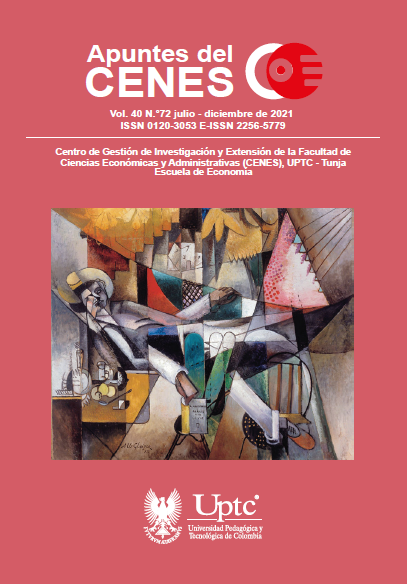Probability of Contagion and Mortality by COVID-19 in Indigenous and Non-indigenous Patients Initiating the Pandemic in Mexico

Abstract
The objective of this research is to identify contagion and mortality factors by COVID-19 among indigenous patients in Mexico, showing their greater fragility in contrast to non-indigenous patients at the beginning of the pandemic. Database of May 22, 2020, of the Undersecretariat of Epidemiology of the Ministry of Health of Mexico is used, with sociodemographic, territorial, diseases variables, among others, and binary logistic models of probability of contagion and mortality are elaborated. The results show a higher risk of contagion and mortality among indigenous patients, with similar determinants compared to non-indigenous patients, but with differences related to their current places of residence for the indigenous population, linked to intermediate cities and large cities, where they migrate from their places of origin to work mainly in the informality of street vendors and without social protection, on the streets of Mexican cities.
Keywords
covid-19, pandemics, deaths, indigenous population, demography, modeling
Author Biography
Jorge Enrique Horbath Corredor
Profesor-Investigador Titular, Grupo de Procesos Culturales y Construcción Social de Alternativas. Departamento de Sociedad y Cultura. El Colegio de la Frontera Sur, Unidad Chetumal
References
- Baghchechi, M., Jaipaul, N., & Jacob, S. E. (2020). The Rise and Evolution of COVID-19. International Journal of Women’s Dermatology, 6(4), 248–254. https://doi.org/10.1016/j.ijwd.2020.06.006 DOI: https://doi.org/10.1016/j.ijwd.2020.06.006
- Bartolomé de las Casas (1977). Brevissima relación de la destruyción de las Indias, Sevilla, 1552. Facsímil.
- Bhandari, R., Hartley, T. A., Lindsley, W. G., Fisher, M. A., & Palmer, J. E. (2013). Assessing Healthcare Utilization for Influenza-like Illness at an Emergency Department and a Student Health Service during the 2009-2010 H1N1 Pandemic. Infectious Diseases, 6, 15–23. https://doi.org/10.4137/IDRT.S11315 DOI: https://doi.org/10.4137/IDRT.S11315
- Borah, W. & Cook, S. F. (1974). Ensayos sobre historia de la población: México y el Caribe. Siglo XXI Editores.
- CDC. (2009). H1N1 Vaccination Recommendations. http://www.cdc.gov/h1n1flu/vaccination/acip.htm
- Comisión Nacional para el Desarrollo de los Pueblos Indígenas -CDI-. (2016). Indicadores socioeconómicos de los pueblos indígenas de México, 2015. Coordinación General de Planeación y Evaluación. https://www.gob.mx/cms/uploads/attachment/file/239921/01-presentacion-indicadores-socioeconomicos-2015.pdf.
- Consejo Nacional de Población -CONAPO-. (2016). Índice de marginación por entidad federativa y municipio 2015. https://www.gob.mx/cms/uploads/attachment/file/159052/01_Capitulo_1.pdf.
- Comisión Económica para América Latina y el Caribe -CEPAL-. (2010). Evaluación preliminar del impacto en México de la influenza AH1N1. CEPAL-OPS.
- Cordero del Campillo, M. (2001). Las grandes epidemias en la América colonial. Revista Archivos de Zootecnia, 50(192), 597-612.
- Davies, S. E. (2013). National Security and Pandemics. UN Chronicle, 50(2), 20-24. https://doi.org/10.18356/0dfec716-en DOI: https://doi.org/10.18356/0dfec716-en
- Doshi, P. (2011). The Elusive Definition of Pandemic Influenza. Bull World Health Organ, 89(7), 532-8. https://doi.org/10.2471/BLT.11.086173 DOI: https://doi.org/10.2471/BLT.11.086173
- Drake, T. L., Chalabi, Z., & Coker, R. (2012). Cost-Effectiveness Analysis of Pandemic Influenza Preparedness: What’s Missing? Bulletin of the World Health Organization, 90(12), 940–941. https://doi.org/10.2471/BLT.12.109025 DOI: https://doi.org/10.2471/BLT.12.109025
- Enemark, C. (2009). Is Pandemic Flu a Security Threat? Survival, 51(1), 191-214. https://doi.org/10.1080/00396330902749798 DOI: https://doi.org/10.1080/00396330902749798
- Fangriya, R. (2015). Pandemic Influenza Threat. World Scientific News, 11, 120-137.
- Galtung, J. (1978). Teorías y técnicas de la investigación social. Eudeba.
- Guilkey, D. & Rindfuss, R. (1987). Logistic Regression Multivariate Life Tables: A Communicable Approach. Sociological Methods and Research 16(2), 276-300. https://doi.org/10.1177/0049124187016002004 DOI: https://doi.org/10.1177/0049124187016002004
- INEGI. (2018). Encuesta Intercensal 2015. Marco conceptual. Instituto Nacional de Estadística y Geografía. http://internet.contenidos.inegi.org.mx/contenidos/Productos/prod_serv/contenidos/espanol/bvinegi/productos/nueva_estruc/702825098742.pdf.
- Kleinbaum, D. & Klein, M. (2010). Logistic Regression: A Self-Learning Text. Stat i st ics for Biology and Health . Springer. https://doi.org/10.1007/978-1-4419-1742-3 DOI: https://doi.org/10.1007/978-1-4419-1742-3
- López-Ríos, F. (1993). Medicina naval española en la época de los descubrimientos.Labor.
- Malvido, E. & Viesca, C. (1985). La epidemia de cocoliztli de 1576. Historias, (11),27-34. https://revistas.inah.gob.mx/index.php/historias/article/view/15223
- Nabarro, D., & Wannous, C. (2016). The Links Between Public and Ecosystem Health in Light of the Recent Ebola Outbreaks and Pandemic Emergence. EcoHealth, 13(2), 227-229. https://doi.org/10.1007/s10393-016-1123-y DOI: https://doi.org/10.1007/s10393-016-1123-y
- PAHO. (2009, 9 oct.). Actualización regional. Pandemia (H1N1) 2009. https://www.paho.org/hq/dmdocuments/2009/IR_Pandemia_H1N1_2009_October9_2009.pdf.
- Prager, F., Wei, D., & Rose, A. (2017). Total Economic Consequences of an Influenza Outbreak in the United States. Risk Analysis: An Official Publication of the Society for Risk Analysis, 37(1), 4-19. https://doi.org/10.1111/risa.12625 DOI: https://doi.org/10.1111/risa.12625
- Rewar, S., Mirdha, D., & Rewar, P. (2015). Treatment and Prevention of Pandemic H1N1 Influenza. Annals of Global Health, 81(5), 645-653. http://dx.doi.org/10.1016/j.aogh.2015.08.014 DOI: https://doi.org/10.1016/j.aogh.2015.08.014
- Secretaría de Salud. (2020a). Datos abiertos de casos diarios por municipio sobre COVID19 México. Dirección General de Epidemiología, Secretaría de Salud de México. https://www.gob.mx/salud/documentos/datos-abiertos-152127
- Secretaría de Salud. (2020b). Lineamiento estandarizado para la vigilancia epidemiológica y por laboratorio de enfermedad por 2019-nCOV. Subsecretaría de Prevención y Promoción de la Salud, Dirección General de Epidemiología. México. https://www.gob.mx/cms/uploads/attachment/file/533167/Lineamiento_2019_nCoV_2020_02_07.pdf
- Tanner, W., Toth, D., & Gundlapalli, A. V. (2015). The Pandemic Potential of Avian Influenza A (H7N9) Virus: A Review. Epidemiology and Infection, 143(16), 3359-3374. https://doi.org/10.1017/S0950268815001570. DOI: https://doi.org/10.1017/S0950268815001570
- Verikios, G., Sullivan, M., Stojanovski, P., Giesecke, J. & Woo, G. (2016), Assessing Regional Risks from Pandemic Influenza: A Scenario Analysis. The World Economy, 39(8), 1225-1255. https://doi.org/10.1111/twec.12296 DOI: https://doi.org/10.1111/twec.12296
- WHO. (2009). Pandemic Influenza Preparedness and Response: A WHO Guidance Document. World Health Organization. https://www.ncbi.nlm.nih.gov/books/NBK143061/figure/ch4.f1/?report=objectonly%2F
- WHO. (2013). Pandemic Inf luenza Risk Management, A WHO Guide to Inform & Harmonize National & International Pandemic Preparedness and Response. WHO Interim Guidance. World Health Organization. https://www.who.int/influenza/preparedness/pandemic/GIP_PandemicInfluenzaRiskManagementInterimGuidance_Jun2013.pdf
- WHO. (2017). Human Infection with Avian Influenza A(H7N9) Virus–China. http://www.who.int/csr/don/22-february-2017-ah7n9-china/en/
- Zhu, Z. & Zhi, L. (2014). Logistic Regression for Insured Mortality Experience Studies. In The Living to 100 Symposium, January 8–10, Orlando, Florida.
